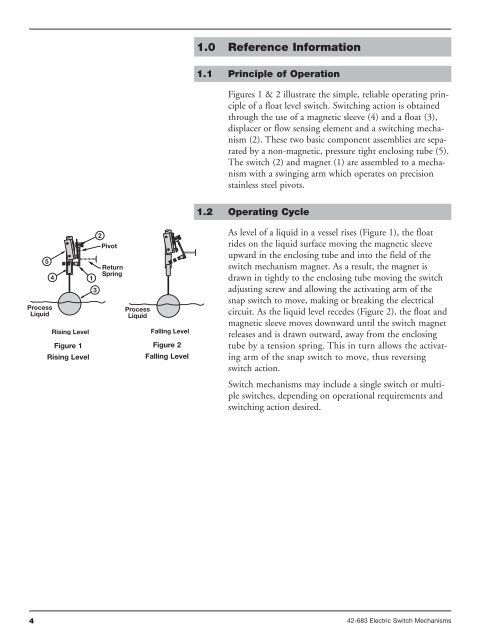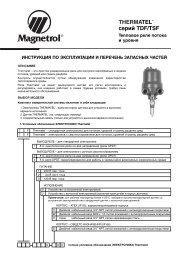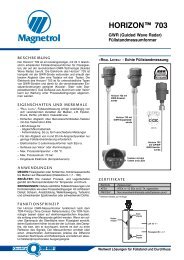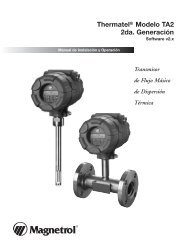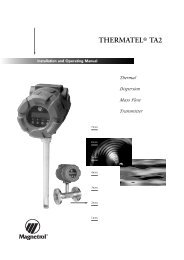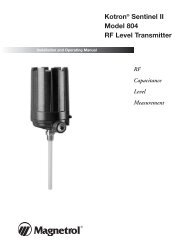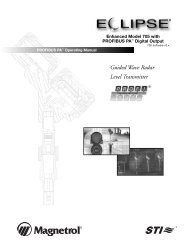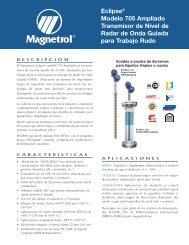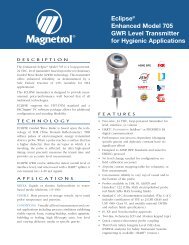Electric Switch Mechanisms - Magnetrol International
Electric Switch Mechanisms - Magnetrol International
Electric Switch Mechanisms - Magnetrol International
Create successful ePaper yourself
Turn your PDF publications into a flip-book with our unique Google optimized e-Paper software.
5<br />
Process<br />
Liquid<br />
4<br />
Rising Level<br />
Figure 1<br />
Rising Level<br />
1<br />
3<br />
2<br />
Pivot<br />
Return<br />
Spring<br />
Process<br />
Liquid<br />
Falling Level<br />
Figure 2<br />
Falling Level<br />
1.0 Reference Information<br />
1.1 Principle of Operation<br />
Figures 1 & 2 illustrate the simple, reliable operating principle<br />
of a float level switch. <strong>Switch</strong>ing action is obtained<br />
through the use of a magnetic sleeve (4) and a float (3),<br />
displacer or flow sensing element and a switching mechanism<br />
(2). These two basic component assemblies are separated<br />
by a non-magnetic, pressure tight enclosing tube (5).<br />
The switch (2) and magnet (1) are assembled to a mechanism<br />
with a swinging arm which operates on precision<br />
stainless steel pivots.<br />
1.2 Operating Cycle<br />
As level of a liquid in a vessel rises (Figure 1), the float<br />
rides on the liquid surface moving the magnetic sleeve<br />
upward in the enclosing tube and into the field of the<br />
switch mechanism magnet. As a result, the magnet is<br />
drawn in tightly to the enclosing tube moving the switch<br />
adjusting screw and allowing the activating arm of the<br />
snap switch to move, making or breaking the electrical<br />
circuit. As the liquid level recedes (Figure 2), the float and<br />
magnetic sleeve moves downward until the switch magnet<br />
releases and is drawn outward, away from the enclosing<br />
tube by a tension spring. This in turn allows the activating<br />
arm of the snap switch to move, thus reversing<br />
switch action.<br />
<strong>Switch</strong> mechanisms may include a single switch or multiple<br />
switches, depending on operational requirements and<br />
switching action desired.<br />
4 42-683 <strong>Electric</strong> <strong>Switch</strong> <strong>Mechanisms</strong>


